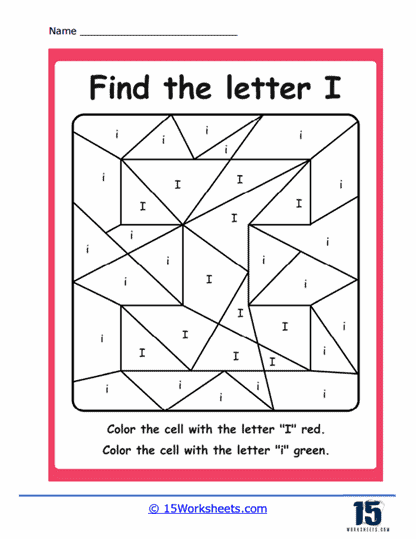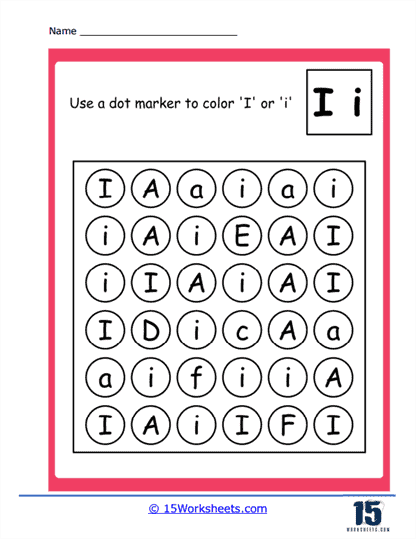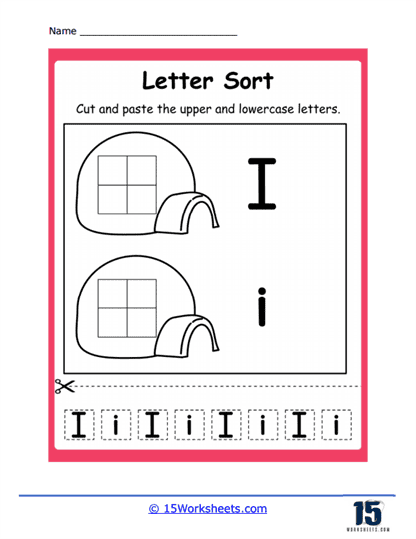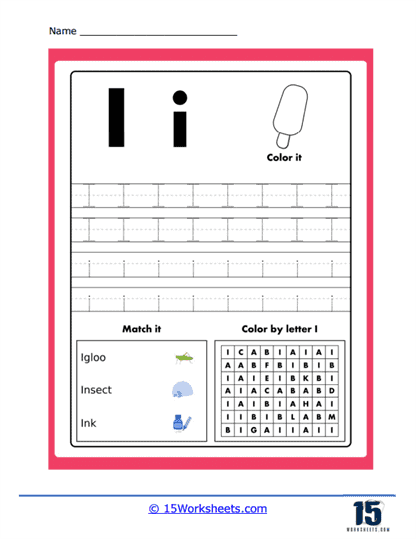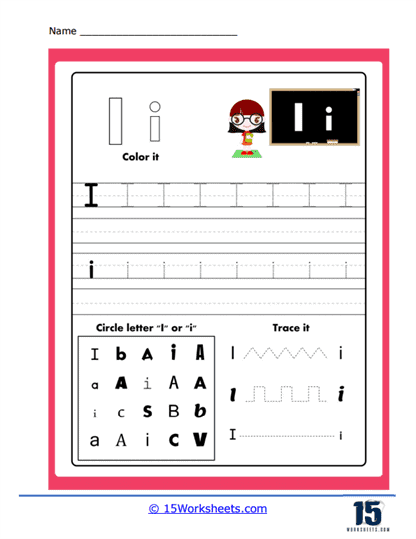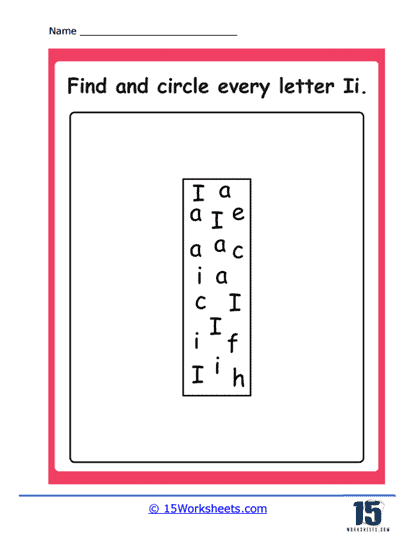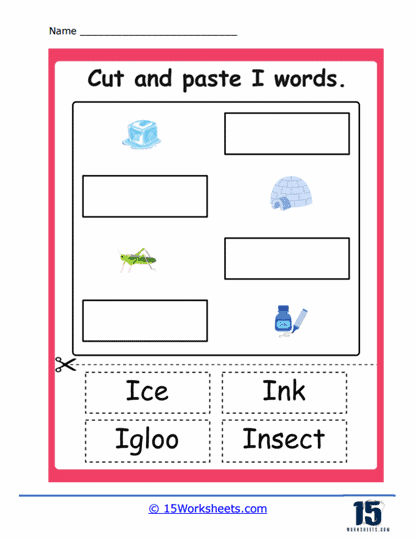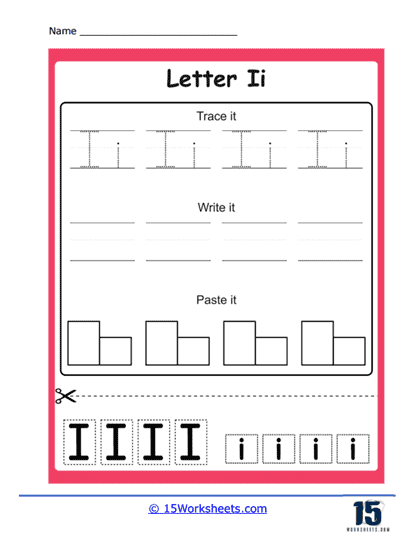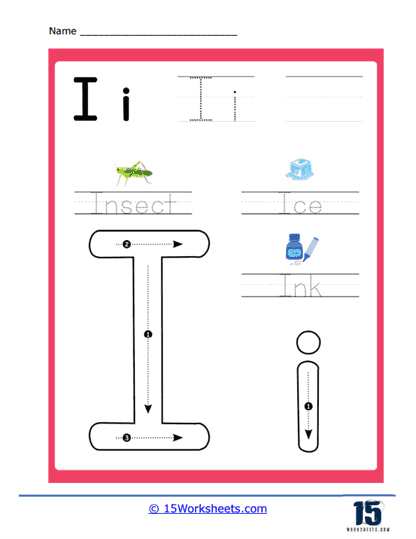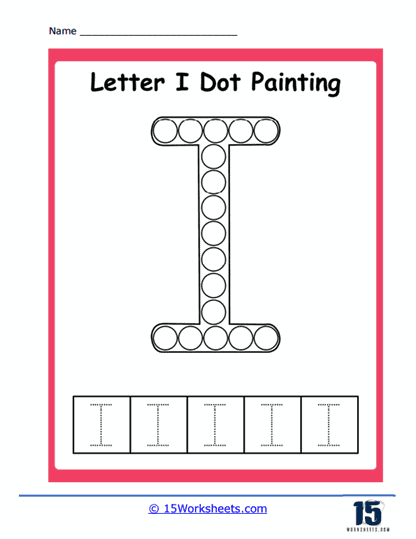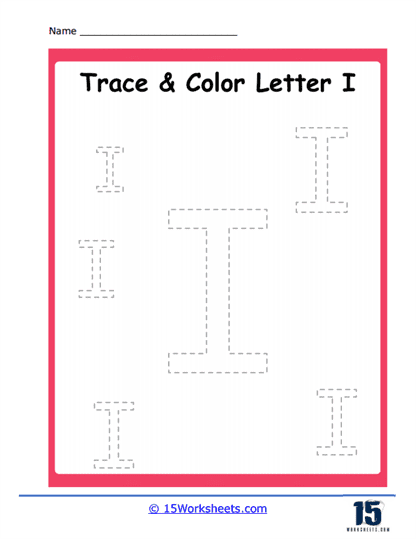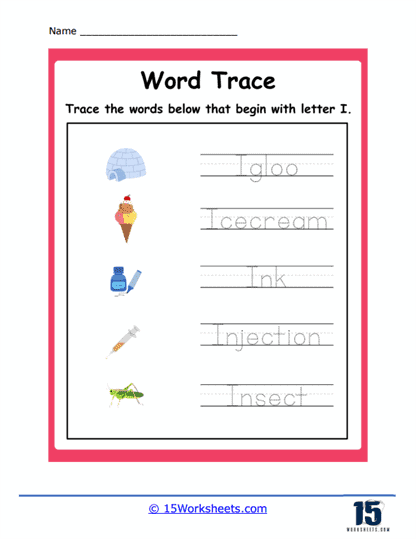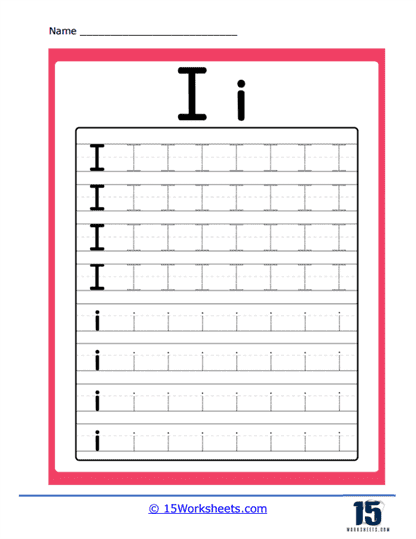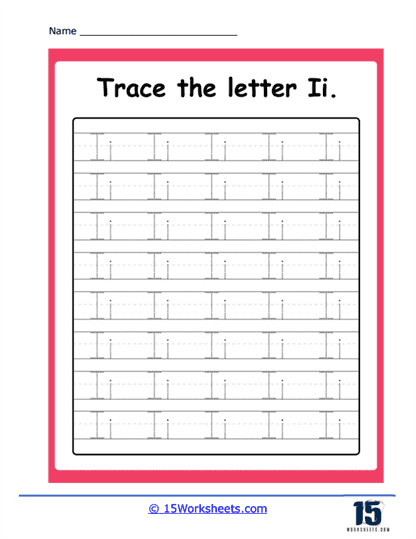Letter I Worksheets
About These 15 Worksheets
Letter I worksheets are an invaluable resource for tutors and teachers seeking to effectively teach elementary students the fundamentals of literacy. These worksheets, focusing specifically on the letter “I,” offer numerous benefits that facilitate the learning process and foster a solid foundation in reading, writing, and language development. This article explores the advantages of utilizing letter I worksheets and outlines various types of exercises commonly found on these worksheets.
Letter I worksheets serve as a valuable tool for improving letter recognition skills among elementary students. By presenting the letter “I” in different fonts, sizes, and cases, students can become familiar with its appearance and distinguish it from other letters. Repetitive exposure to the letter “I” through engaging exercises helps students develop visual discrimination skills, leading to greater accuracy and speed in identifying letters in various contexts.
Phonics instruction is crucial in helping young learners decode and read words. Letter I worksheets often incorporate phonics activities that enable students to associate the letter “I” with its corresponding sound. These exercises may include identifying and matching pictures of objects starting with the “I” sound, completing words by adding the missing initial or medial “I” sound, and practicing writing words that contain the letter “I.” Such phonics-focused exercises encourage students to understand the relationship between letters and sounds, paving the way for improved reading fluency.
Engaging elementary students in vocabulary-building exercises is vital to expand their word knowledge and comprehension. Letter I worksheets can feature vocabulary exercises centered around words starting with the letter “I.” These activities may involve matching words with their corresponding pictures, identifying and categorizing words, or creating sentences using target words. Through such exercises, students not only enhance their vocabulary but also develop their language skills and understanding of word usage within different contexts.
In addition to reinforcing letter recognition and language skills, letter I worksheets provide opportunities for students to refine their fine motor skills. Exercises that involve tracing, writing, and coloring the letter “I” aid in developing hand-eye coordination and fine motor control. These activities contribute to the overall development of students’ writing abilities, preparing them for more complex writing tasks in the future.
Letter I worksheets can be designed in a visually appealing and interactive manner to capture students’ attention and foster their cognitive engagement. Colorful illustrations, puzzles, mazes, and games integrated into the worksheets make learning the letter “I” a fun and enjoyable experience. The use of these creative elements stimulates students’ curiosity, promotes active learning, and helps sustain their interest throughout the lesson.
Repetition and practice are key components of effective learning. Letter I worksheets offer ample opportunities for students to reinforce their understanding of the letter “I” through practice exercises. These may include letter tracing, letter formation, identifying words starting with “I,” and completing sentences with “I” words. Regular practice with worksheets ensures that students internalize the concepts and skills associated with the letter “I,” leading to increased retention and proficiency.
About The Letter I
Here are ten unique things about the letter “I” that people may not know:
Origin – The letter “I” is derived from the Semitic letter “yodh,” which represented a hand or an arm. Over time, it evolved into the letter “I” as we know it today.
Roman Numerals – In the Roman numeral system, “I” represents the number one. It is the simplest and smallest numeral, often used as the foundation for constructing larger numbers.
Pronunciation – The pronunciation of the letter “I” varies depending on the language. For instance, in English, it can have different sounds, such as the long “I” (/aɪ/) in words like “ice” and the short “I” (/ɪ/) in words like “it.”
Dotting the “I” – The dot placed above the lowercase “i” is called a “tittle.” It originated as a tiny stroke but evolved into a dot over time. This practice started in the 11th century to differentiate “i” from “l” in handwriting.
The English Alphabet – The letter “I” is the ninth letter of the English alphabet. It follows the letters H and precedes the letter J.
Vowel Status – The letter “I” is classified as both a vowel and a consonant. As a vowel, it can function as a syllable on its own, as seen in words like “ski” and “hi.” As a consonant, it often appears as the initial sound in words like “ink” and “it.”
Letter Frequency – In terms of frequency, the letter “I” is one of the less common letters in the English language. It ranks 13th out of the 26 letters when it comes to its occurrence in words.
Morse Code – In Morse code, the letter “I” is represented by two short signals or dots (· ·). This simple pattern helps facilitate efficient communication using the code.
Mathematical Symbol – In mathematics, the uppercase “I” is often used as a symbol for the imaginary unit, which is the square root of -1. It plays a crucial role in complex numbers and various mathematical applications.
Cultural Symbolism – In some cultures and belief systems, the letter “I” is associated with concepts such as the self, individuality, and the ego. It represents the notion of “I am” or self-identity.

